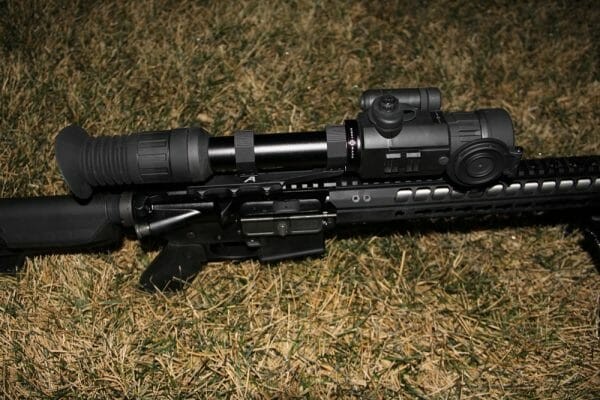Great Night Vision Scope
The legendary Marine Scout #Sniper, Carlos Hathcock, once used an early version of a #nightvision #scope called a Starlight scope to keep a group of NVA at bay. At that time in history, night vision seemed like something out of science fiction. In modern times the average consumer has access to night vision equipment at a surprisingly affordable price.
Even though the prices have come down these scopes a lot of them can still be a little pricey for the average consumer to afford. This opportunity is where Sightmark saw a niche that they could fill with an affordable entry into the night vision market with the Photon XT 4.6x42S Digital Night Vision Riflescope that has an MSRP of $499.97. There are two different types of night vision on the market. The first is called generational night vision (aka traditional night vision) which uses an image intensification tube. The IIT consist of three separate parts which includes a photocathode, a microchannel plate, and a phosphor screen.
Light passes through the front lens and hits the photocathode which converts the ambient light from photons into electrons. The electrons then are released into a vacuum which causes the particles to be accelerated by the vacuum into the microchannel plate. The microchannel plate has millions of little tiny holes. The electrons enter these small holes and generate secondary electrons. All these particles slam into the phosphor screen. This screen takes the electrons and converts it back to photons.
There are three recognized generations of this type of night vision (technically there is not a Gen 4 classification since it failed to meet the USMIL requirements for the designation). Generation one can run a few hundred dollars, and generation three can run into the $1000s. Each generation is a substantial improvement in quality, but this improvement also comes at an increase in cost. Digital night vision uses a complementary metal-oxide-semiconductor (CMOS) and a microdisplay. Light hits the CMOS and then is converted by the CMOS into an electrical signal. This electrical signal is converted back to show an image on the microdisplay.
Digital night vision cannot match generation three night vision in terms quality. Where digital night vision excels is when you compare it to the generation one night vision optics. For the same price point, digital night vision outperforms the generation one and comes close to the clarity generation two. The drawback to digital night vision is that it requires the addition of an artificial light source. Most night vision scopes will use an inferred light.








